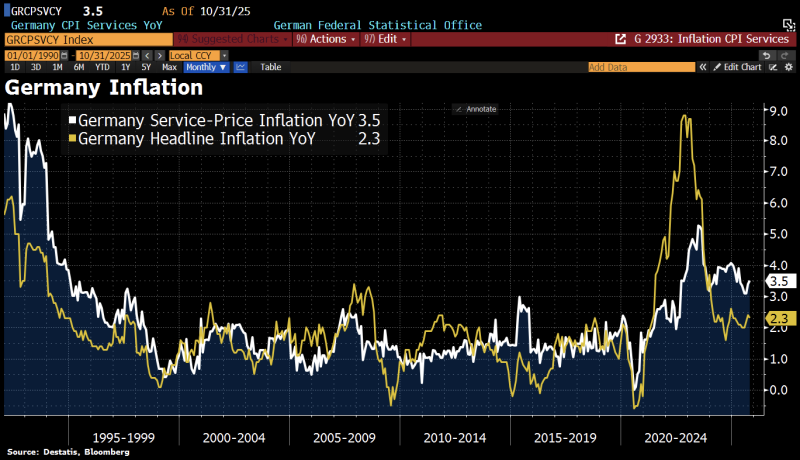● Market commentator Holger Zschaepitz from Welt recently pointed out that Germany's service inflation is stuck above 3%, showing persistent domestic price pressures. October data from Germany's Federal Statistical Office shows service prices up 3.5% year-over-year, while overall inflation cooled to 2.3%—highlighting a widening gap in Europe's biggest economy.

● The real concern for policymakers is that this inflation is structural, not temporary. Unlike 2022's energy crisis, today's price pressures come from wage increases, higher energy costs, and rising non-wage labor expenses—all notoriously sticky.
Service inflation remains stubbornly above 3%—and has even ticked up recently. As Zschaepitz puts it
● The financial squeeze is hitting multiple sectors. Higher labor and input costs are being passed to consumers through housing, insurance, healthcare, and hospitality prices. Businesses in services and retail are caught between absorbing costs and hurting their bottom line. For workers, nominal wage gains aren't translating to real purchasing power. For the ECB, this complicates any plans to cut rates in 2025.
● This points to a deeper Eurozone challenge. With goods inflation easing, persistent service price increases could keep inflation above the ECB's 2% target longer than expected. Analysts worry that even modest wage growth, combined with minimum wage hikes, might create a new inflation floor around 3%—forcing the ECB to keep rates elevated.
 Eseandre Mordi
Eseandre Mordi

 Eseandre Mordi
Eseandre Mordi


